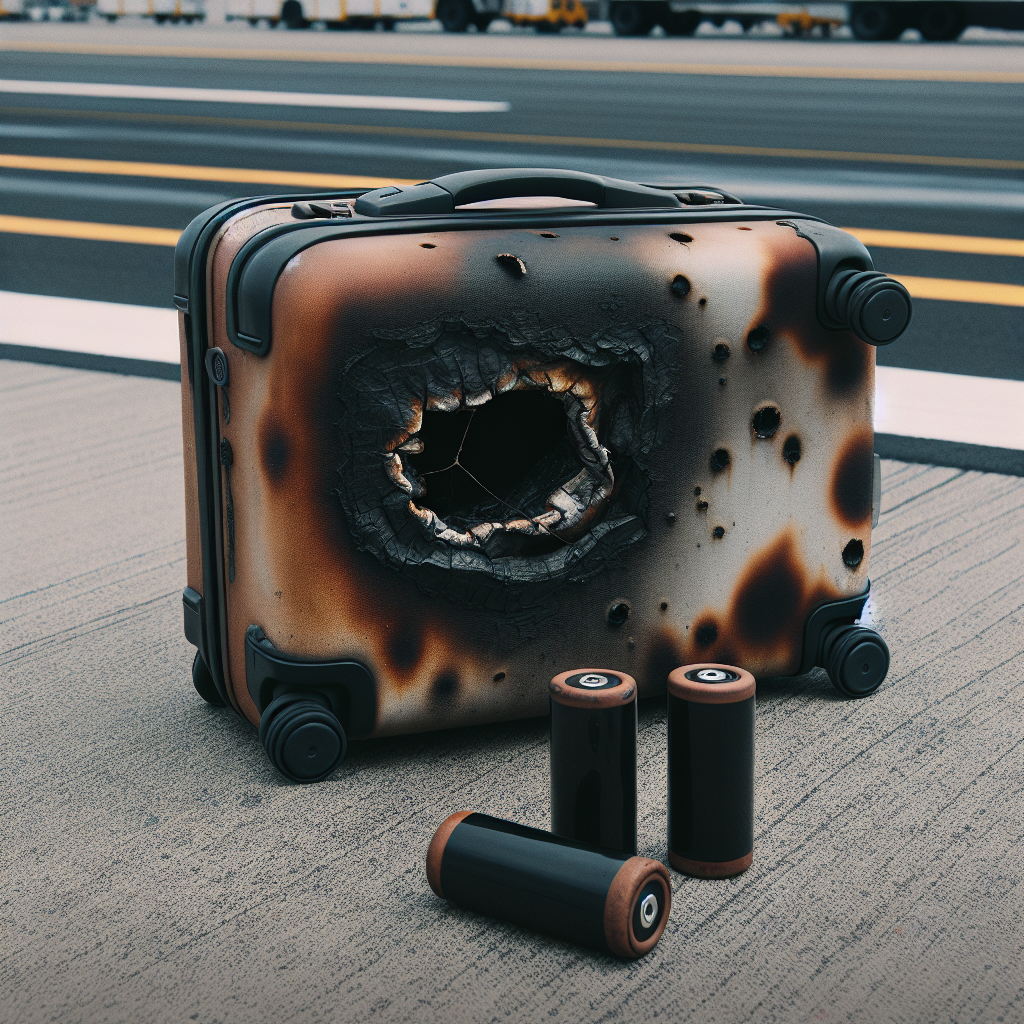
Close Call at Newark Airport Highlights Unseen Dangers
Share
On a seemingly routine day, May 5th, 2012, amidst the bustling terminals of Newark, NJ, a potential catastrophe was narrowly avoided. United Airlines ramp agents' vigilance came to the forefront when an unusual occurrence on the tarmac sent a wave of concern through the airport's operations.
As bags were being loaded onto the aircraft, one alert ramp agent noticed something alarming. Two smoking batteries lay on the ramp, having burnt through the checked luggage they occupied. Swiftly identifying the danger, the agent reported the incident, and an immediate investigation commenced. The discovery of such hazards on the ramp pointed to a grave oversight, and the repercussions could have been severe—a passenger's luggage in the aircraft bin carrying the potential to ignite a fire. Thankfully, no one was injured, and the situation was contained swiftly, but it served as a wake-up call regarding the unseen dangers that can accompany air travel.
The incident has prompted extensive reviews of airline safety protocols. It is a stark reminder of the need for continuous vigilance in detecting hazardous materials in luggage. Travelers and airline staff alike have learned the crucial importance of proper battery handling and storage, as well as rapid response to similar threats.
To prevent such incidents, industry experts are emphasizing the education of the public on safe battery handling while traveling. Airlines are also upgrading their equipment and protocols for baggage handling to mitigate risks. Innovations like the FireTowel, not used in this particular instance, are now getting highlighted as crucial tools in enhancing safety.

The FireTowel is designed to be a game-changer in handling such crises. Remarkably thicker than a standard fire blanket, it comes with perimeter weights to secure it in place, trapping smoke and flames efficiently. Moreover, its handles facilitate easy maneuverability to swiftly cover a fire source and tie it securely to allow for safe cooling. Had this invaluable device been readily available on the day of the incident,
